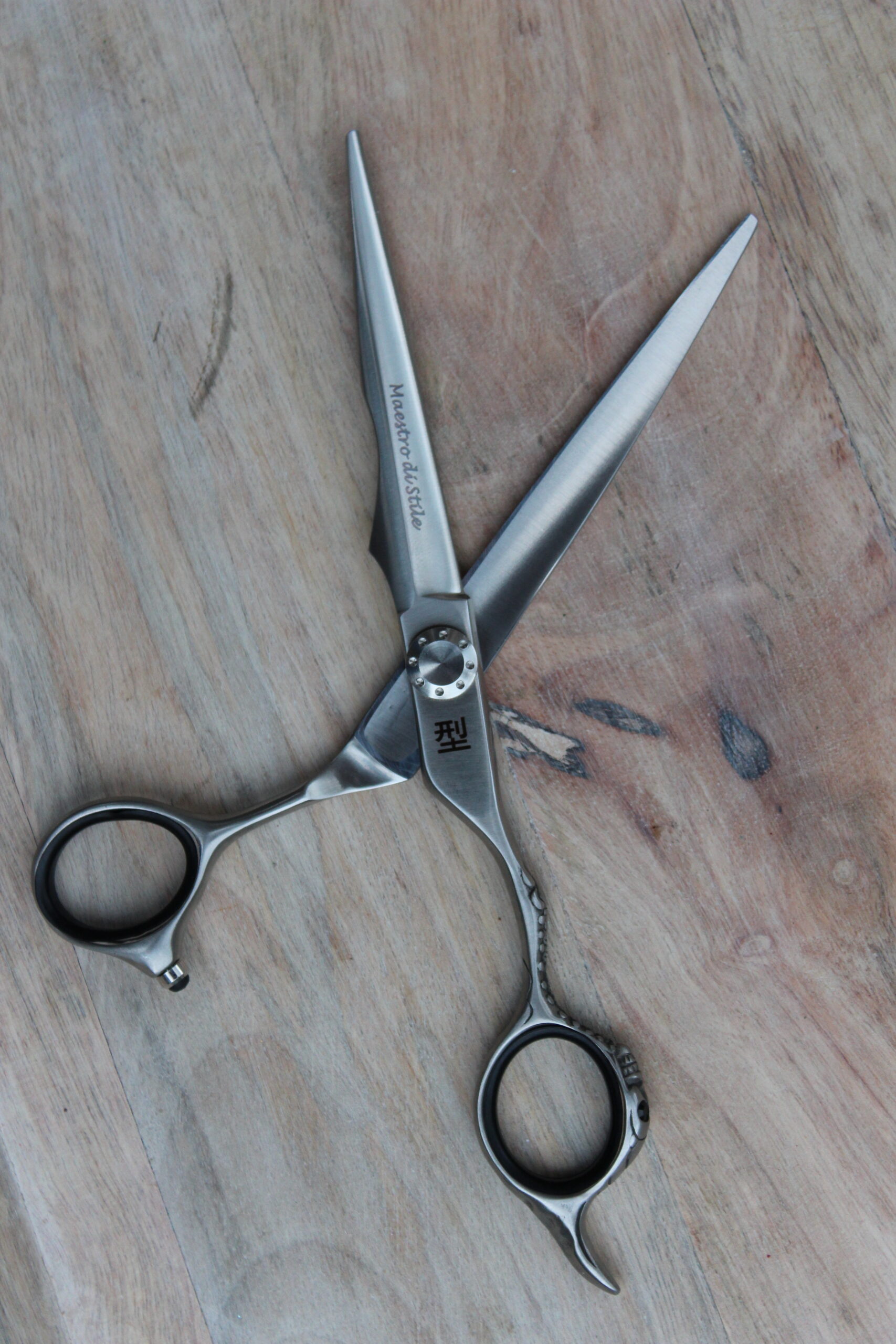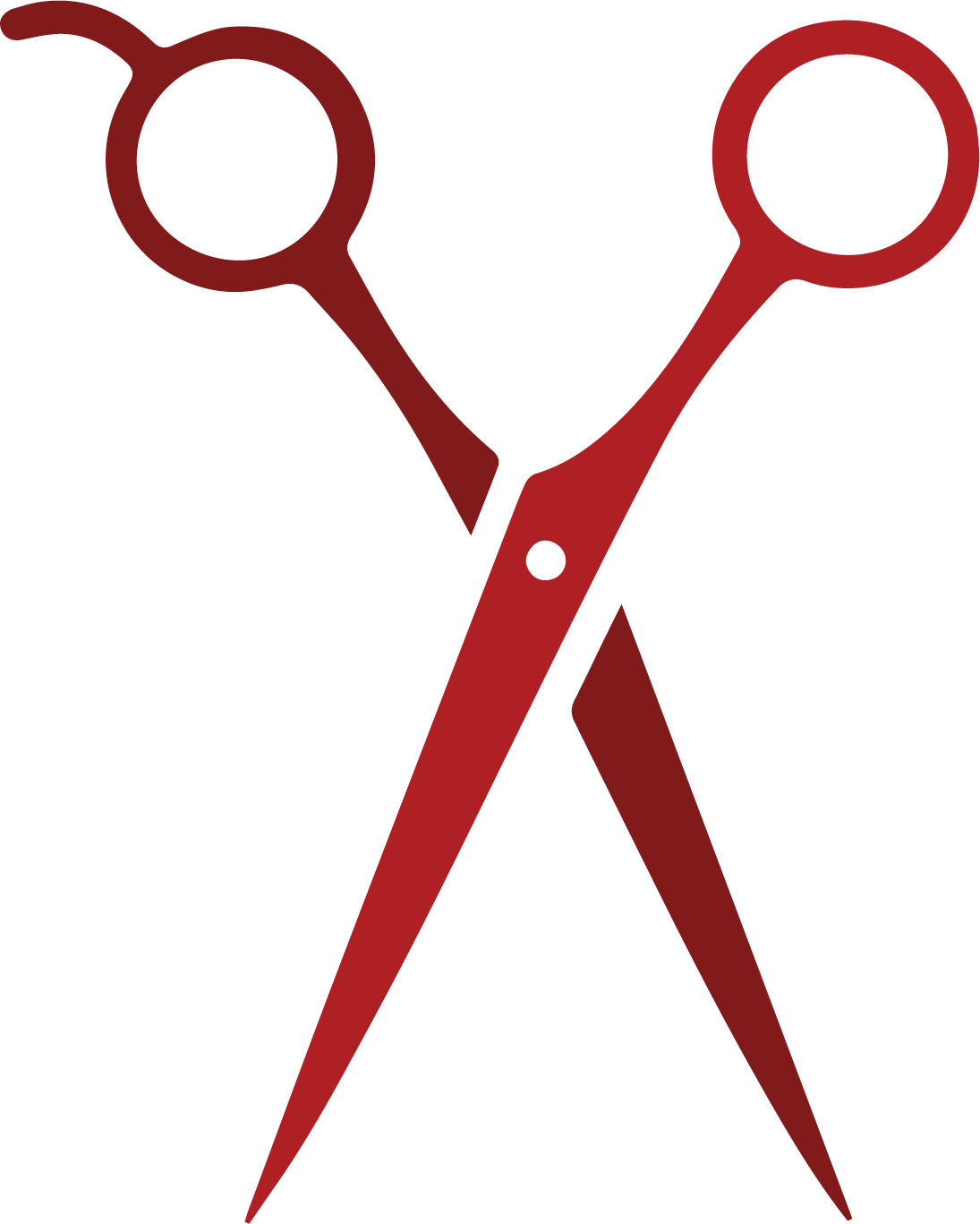Shear Boss Tips

The Importance of Tension
Check your tension daily! One common mistake is setting the tension too loose. While it may seem that you're saving your hand muscles, you're actually damaging the scissor edge and causing more stress to your hand. To test the tension, hold your shear by the finger hole and point the blades straight up. Now, lift the thumb hole up so the blades are fully open (no edges overlapping). Lastly, let go of the thumb hole and let the scissors close. It should not close more than half way! If it does, the tension is too loose. The blades need to ride against each other to cut properly, and when the scissor is too loose, the blades will push and/or fold the hair. The stylist's natural reaction is to push with their thumb, which puts undue stress on the hand and on the blades. In fact, it causes the blades to dull quicker and the damage may require a scissor technician to do more than a normal sharpening/restoration, which can reduce the life expectancy of the scissor.
On the other hand, if during the test the blades didn't close at all, the tension is too tight. This will cause stress to your hand and the ride area of the blades, allowing hair or dust to get ground into the metal. Most cutting problems with otherwise sharp shears are due to tension, so make sure you check it daily.

Maintain a Daily Routine
Clean, clean, clean those shears! Not only is built-up hair, oil and dirt unsanitary and unattractive to your client, it can harm your scissors. Wipe your scissors between cuts with a clean cloth. Open the shears as far as you can and really get into the pivot area, which is the most common site for build-up. When clean, apply a drop of scissor lubricant to each blade in the pivot area. This will help make sure the scissors operate smoothly for the next cut. Also, clean your scissors at the end of every work day to maintain a healthy routine. Lastly, never use your shears to cut anything other than hair.

Disinfecting Your Shears
For those who are working in the salon during the pandemic, COVID-19 can live up to 72 hours on stainless steel. To disinfect your shears safely, use alcohol on a cotton ball and/or gently wash in a warm soapy water and rub over all areas. Afterwards, dry and lubricate with shear oil. Do not use bleach on shears as some shears have a high carbon content and bleach can attack the metal. If you do not have a shear oil, an alternative method can be used with an alcohol/wax mixture. It delivers a wax coating that remains after the alcohol has evaporated that does not attract hair and dirt like oil does. Ask Shear Boss for shear oil.

Signs of Needing Sharpening
When shears begin displaying these signs, your shears are due for a sharpening. These signs include: pulling hair, pushing hair, skipping hair and folding hair. Are you an expert point cutter? Your shears should slice with ease, not tug at the strands. .Are you getting crisp cuts along the bangs, or do you find yourself chasing the hair? Are you getting a distinct crunchy feel when you cut? If you said yes to any of these questions, it's time to sharpen your shears!

Lubricate The Shears
Remember to lubricate your shears often! Lubricate with shear lube only because it contains silicon and a light solvent. Not lubricating can cause the screw to rust and not stay tight. There is moisture in the pivot from scissoring, and the lube helps get rid of it. Not lubricating can cause tiny pieces of hair to remain in the pivot causing tighter tension. This results in slowing the shear and causes a binding feel when scissoring. Lube the shear, then open and close them a few times to get the lube around the pivot good. Convex shears need to be lubed more than beveled shears. Never use blade oil on a shear because it will stiffen over time. Ask Shear Boss for shear oil!

The Importance of Tension
Check your tension daily! One common mistake is setting the tension too loose. While it may seem that you're saving your hand muscles, you're actually damaging the scissor edge and causing more stress to your hand. To test the tension, hold your shear by the finger hole and point the blades straight up. Now, lift the thumb hole up so the blades are fully open (no edges overlapping). Lastly, let go of the thumb hole and let the scissors close. It should not close more than half way! If it does, the tension is too loose. The blades need to ride against each other to cut properly, and when the scissor is too loose, the blades will push and/or fold the hair. The stylist's natural reaction is to push with their thumb, which puts undue stress on the hand and on the blades. In fact, it causes the blades to dull quicker and the damage may require a scissor technician to do more than a normal sharpening/restoration, which can reduce the life expectancy of the scissor.
On the other hand, if during the test the blades didn't close at all, the tension is too tight. This will cause stress to your hand and the ride area of the blades, allowing hair or dust to get ground into the metal. Most cutting problems with otherwise sharp shears are due to tension, so make sure you check it daily.

Maintain a Daily Routine
Clean, clean, clean those shears! Not only is built-up hair, oil and dirt unsanitary and unattractive to your client, it can harm your scissors. Wipe your scissors between cuts with a clean cloth. Open the shears as far as you can and really get into the pivot area, which is the most common site for build-up. When clean, apply a drop of scissor lubricant to each blade in the pivot area. This will help make sure the scissors operate smoothly for the next cut. Also, clean your scissors at the end of every work day to maintain a healthy routine. Lastly, never use your shears to cut anything other than hair.

Disinfecting Your Shears
For those who are working in the salon during the pandemic, COVID-19 can live up to 72 hours on stainless steel. To disinfect your shears safely, use alcohol on a cotton ball and/or gently wash in a warm soapy water and rub over all areas. Afterwards, dry and lubricate with shear oil. Do not use bleach on shears as some shears have a high carbon content and bleach can attack the metal. If you do not have a shear oil, an alternative method can be used with an alcohol/wax mixture. It delivers a wax coating that remains after the alcohol has evaporated that does not attract hair and dirt like oil does. Ask Shear Boss for shear oil.

Signs of Needing Sharpening
When shears begin displaying these signs, your shears are due for a sharpening. These signs include: pulling hair, pushing hair, skipping hair and folding hair. Are you an expert point cutter? Your shears should slice with ease, not tug at the strands. .Are you getting crisp cuts along the bangs, or do you find yourself chasing the hair? Are you getting a distinct crunchy feel when you cut? If you said yes to any of these questions, it's time to sharpen your shears!

Lubricate The Shears
Remember to lubricate your shears often! Lubricate with shear lube only because it contains silicon and a light solvent. Not lubricating can cause the screw to rust and not stay tight. There is moisture in the pivot from scissoring, and the lube helps get rid of it. Not lubricating can cause tiny pieces of hair to remain in the pivot causing tighter tension. This results in slowing the shear and causes a binding feel when scissoring. Lube the shear, then open and close them a few times to get the lube around the pivot good. Convex shears need to be lubed more than beveled shears. Never use blade oil on a shear because it will stiffen over time. Ask Shear Boss for shear oil!
